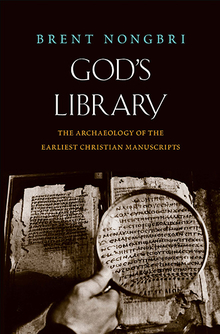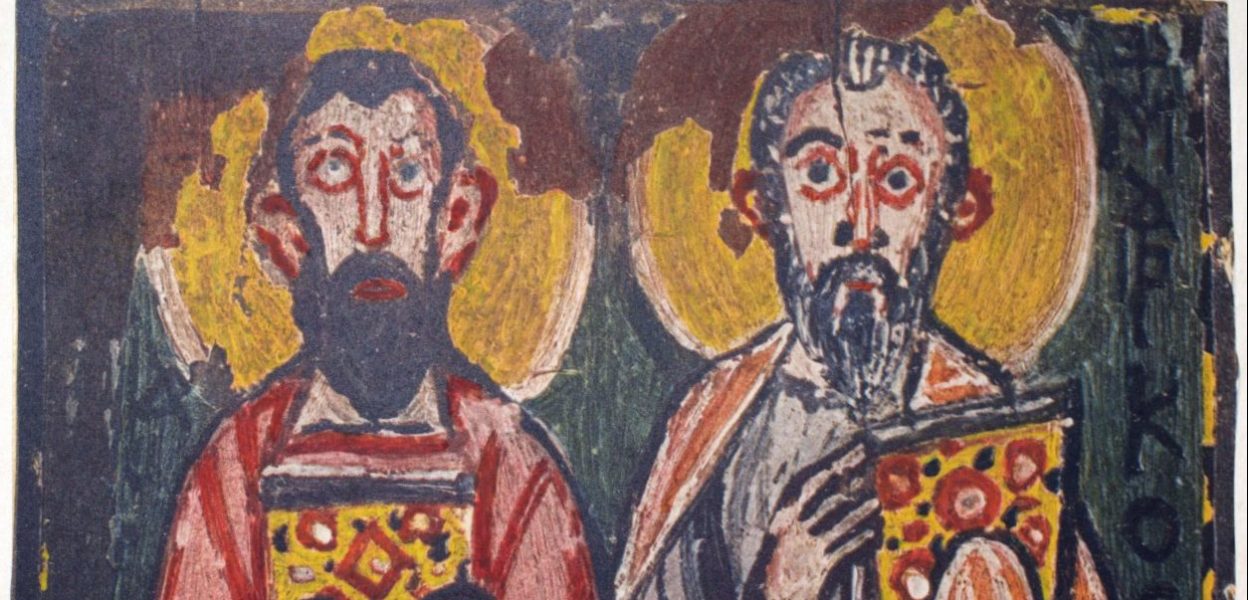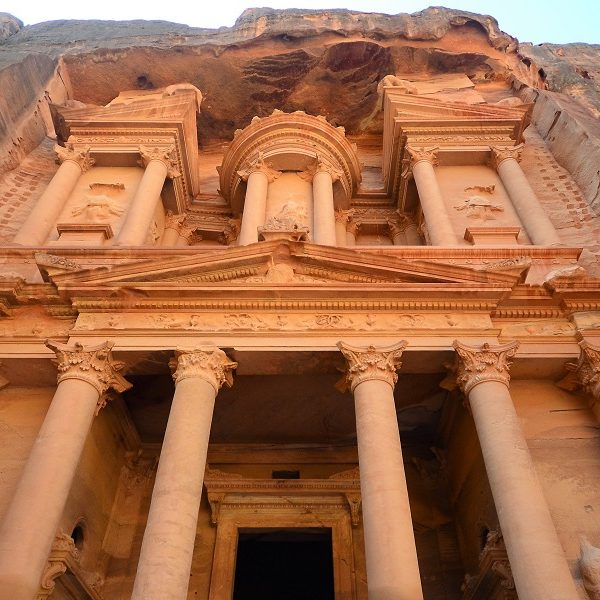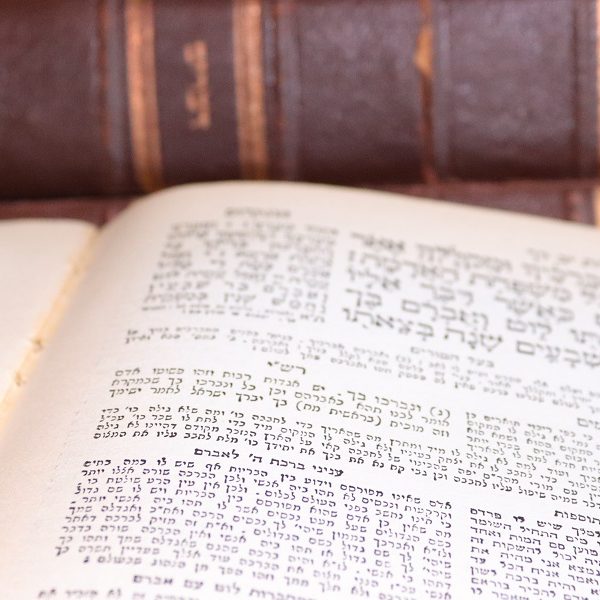Finding the Bible
Brent Nongbri—
Late in 1907, it was publicly revealed that the American businessman Charles Lang Freer (1854–1919) had acquired a group of four early Christian books from an antiquities dealer in Egypt. Freer, who made a fortune from the production of railcars in Detroit during the 1890s, had established himself as a discerning art collector well before he first traveled to Egypt in 1906. Shortly after his arrival there, he spent December 17 and 18 with two Greek scholars looking over a group of manuscripts for sale by a local dealer. His diary entry for Wednesday, December 19, is terse: “Cairo: Bought manuscripts in forenoon & paid for them during afternoon.” For the next twelve months, only a select circle of experts knew the significance of what Freer had bought. Then, in December 1907, one of these scholars announced to the world that Freer’s purchase had consisted of
—a Greek manuscript on parchment containing Deuteronomy and Joshua datable by its handwriting to the fourth or fifth century CE
—a Greek manuscript on parchment containing the Psalms datable by its handwriting to the sixth or seventh century
—a Greek manuscript on parchment containing the four gospels (in the order Matthew, John, Luke, and then Mark) datable by its handwriting to the fifth or sixth century, enclosed in wooden covers decorated with portraits of the evangelists
—a Greek manuscript on parchment containing the letters of Paul datable by its handwriting to the fifth century.
The manuscript of the gospels was in an especially fine state of preservation and was considered to be nearly as old as the earliest known Greek copies of the New Testament. It also preserved an unusual ending for the Gospel According to Mark, an ending unknown from other early Greek witnesses that included the ominous line “Christ replied to them, ‘The term of years of Satan’s power has been fulfilled, but other terrible things draw near.’” This news generated a great deal of interest, not only among biblical scholars and historians, but also among the general public. Newspaper headlines spun the story in a variety of ways:
BIBLE ERRORS TO BE CORRECTED BY NEWLY FOUND MANUSCRIPTS: Valuable Writings Locked Up in Detroit Safety Vault Supply Lost Parts
A NEW VERSE FOR ST. MARK’S GOSPEL: Discovered in Ancient Manuscript Owned by Detroit Man . . . Charles L. Freer, Millionaire Archaeologist Bought Priceless Bit of Vellum From Curio Dealer at Cairo
CHRISTIAN WORLD EAGER FOR FREER MANUSCRIPT: Believed That Important Passages Will Be Supplied by Newly Discovered Scripture
NOT EXCITED OVER C. L. FREER’S FIND: Local ministers do not believe it teaches anything that is new
NEW VERSE IS ADDED TO GOSPEL OF MARK: Contained in an Ancient Manuscript Dug from the Sands of Akhmim. First revealed in Chicago
Marvelous Story of the Discovery of an Authentic Manuscript of the Bible: An American Secures the Precious Relic of the Famous Alexandrian Library; Words of Christ, Lost 1,300 Years, Are Thus Recovered and Officially Declared
The catchwords in the headlines indicate why the manuscripts were thought to be important: They were ancient and might be a conduit to authentic knowledge about Jesus and early Christianity. The headlines also give a sense of the allure of the manuscripts: “Newly Discovered Scripture,” “Dug from the Sands,” found by a “Millionaire Archaeologist,” “First revealed in Chicago,” and now kept in Detroit. That is to say, early Christian treasures from Egypt had now been taken to America’s heartland—a “Marvelous Story.”
After the excitement of the first announcement came the serious work of editing and publishing the books. This task was given to Henry A. Sanders (1868–1956), a junior professor of Latin at the University of Michigan, who worked with remarkable speed and acumen to produce a study of the text of the Deuteronomy and Joshua manuscript by 1910. Freer supplied the necessary funding to produce a companion photographic facsimile of stunning quality. But it was the release of the study and facsimile of the gospel manuscript in 1912 that brought a second wave of publicity that seems at least as intense as the first. Newspapers across the country reproduced leaves of the manuscript and retold the tale of its purchase. The New York Times ran a front-page story on May 13, 1913, and then had a longer feature the following Sunday with illustrations of the book’s decorated covers. The stories announced the new publications as well as scholars’ reactions, and they noted that the gospel manuscript, along with Freer’s other ancient books, were to be kept in the art gallery Freer was funding for the Smithsonian Institution in Washington, D.C. Thus the books are sometimes known as “the Washington Manuscripts” and the gospel manuscript as Codex Washingtonensis. With its new name, the codex was in no way inferior, the newspapers claimed, to other famous Bibles around the world: “This happy find of Mr. Freer’s places the United States on the list with Russia, which owns the Sinaiticus manuscript at St. Petersburg; with Italy and its Codex Vaticanus at Rome, with England’s Alexandrinus at London and Codex Bezae at Cambridge.” Freer’s gospel manuscript had also, by some accounts, aged significantly since its unveiling as a “fifth or sixth century” manuscript in 1907. According to the New York Times of May 18, 1913, the date of the Freer manuscript of the gospels had been established as “the third, or at the latest the early fourth, century.” Yet, on May 14, the same paper had cited an article in the Times of London stating that the book “probably belongs to the fifth or sixth centuries.” Both reports are somewhat curious, since, after an extensive discussion, Sanders himself had concluded that most of the evidence “seems to point to the fourth century, though the beginning of the fifth must still be admitted as a possibility.” With regard to the place where the manuscripts were discovered, Sanders offered only mysterious hints: “While I am not as yet allowed to publish the exact spot where the MSS were found, the statements made by the finders fix it definitely and are consistent with the evidence gathered.”
From God’s Library by Brent Nongbri. Published by Yale University Press in 2020. Reproduced with permission.
Brent Nongbri is an Honorary Research Fellow at Macquarie University in Sydney, Australia, and the author of Before Religion: A History of a Modern Concept and numerous articles on the paleography and codicology of early Christian manuscripts.
Further Reading:



























